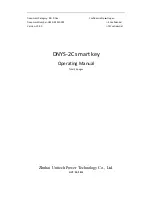
12
6. COLLECTION:
The perfusate is collected in a well plate for further analysis. The collection tray moves
automatically accordingly to the number of active columns (Perifusion chambers) and the pre-set sampling rate.
The collection tray can hold deep and standard 96 well plates; be sure to place the included spacer adapter inside
the tray to use it with standard plates.
7. REFRIGERATION:
The collection tray can be refrigerated to avoid degradation of the analytes in the perfusate
during experiments. This is done by a dedicated diaphragm pump.
5.2
Valve Manifold
The valve manifold was designed to automate the selection of the stimulus. Manual source changing is not only
time consuming for the user, but it also increases the potential for artifacts on the results. Manual source
changing requires the user to pause the machine to avoid drawing air into the system, but cell metabolism cannot
be paused! Cells will continue to metabolize and, when flow is resumed,
a “spike” of metabolites will be generated
at the output.
Minimizing this problem was a priority at the time of developing the new Perifusion system. The result was a self
contained, 32 valves, 8-in to 4-out manifold. The manifold can change the source for every channel
“on-the-fly”
(milliseconds), eliminating the need for pausing the system. It also eliminates the need for external sources
requiring a separate heater; the sources can be housed inside the machine, allowing for a better temperature
control.
In conjunction with the ability to perform automated protocols, the valve manifold provides a hands-off solution
from start to finish of a Perifusion experiment. The user can now leave the machine unattended and have the
certainty that source changes will be made flawlessly every time.
Figure 13: Valve Manifold
Understanding the valve manifold is key for a proper experiment setup. Inputs are located at the bottom of the
manifold block, starting with input
1
at the left (see
fig. 13
). Sources should be connected to the input ports
according with this numeration.
There are four output channels (
A, B, C, D
) located
in the front of the manifold, starting with channel
A
at
the top. Each output channel can be split into 2 using
a wye
“Y” fitting, or split into 3 using a cross “X” fitting.
Summary of Contents for PERI-4.2
Page 30: ...30 AUC Area Under Curve...













































